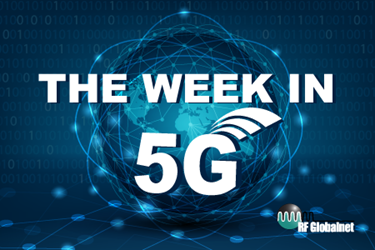The Week in 5G: 12/15/2020 — FCC C-Band Auction Tops $5 Billion; 220+ Million People Now Have 5G Access
By Ed Biller

The Federal Communications Commission’s C-band auction in the U.S., which kicked off last week, has brought in more than $5 billion in bids so far — including nearly $2 billion on day one, reports Network World.
The FCC will license spectrum in the 280 MHz-wide swath between 3.7 GHz and 3.98 GH in 20-MHz sub-blocks, spread across 5,684 partial economic areas (PEAs) nationwide, until no PEAs with more than one interested bidder exist.
In Australia, that nation’s telecoms authority now is welcoming applications for bidders interested in spectrum in the 26 GHz band, who will compete for 2.4 GHz of the band across 27 geographic blocks in April 2021, reports Mobile World Live.
The auction marks the first time the Australian Communications and Media Authority (ACMA) has made mmWave spectrum available in the country applications for the mmWave spectrum will be accepted until 21 January 2021. It plans to auction 2.4GHz of the band across 27 geographic blocks.
The 26 GHz auction is the first time high-band 5G spectrum will be made available in the country, and an auction for low-band 5G spectrum is expected to follow later in 2021.
Citing the 2020 Ericsson Mobility Report, PCMag reports Ericsson’s projection from 2018 – that 1.5 billion smartphone users would have 5G by the end of 2024 — remains on target despite the global pandemic affecting everything from spectrum auctions to network rollouts.
More than 1 billion people currently reside in areas covered by 5G, states Ericsson, but it’s expected that “only 220 million 5G subscriptions will be active by the end of this year (thanks to uptake increase in China), and only 150 million of those will even utilize a 5G-capable device,” reports PCMag.
A recent statement by wireless industry trade association 5G Americas supports these claims. It states 143 5G commercial networks now are live worldwide, reaching 229 million people on the back of subscriber growth that outpaces 4G LTE by a factor of four.
Related, The U.S. crusade against China telecoms equipment giant Huawei – which has resulted in, at the least, de facto bans of both Huawei and ZTE from several nations’ 5G infrastructure buildouts – appears to be benefitting Japanese equipment providers, reports Bloomberg. The report states that equipment from manufacturers in close U.S. ally Japan are seen as a more attractive (from an international relations standpoint) and more secure than their Chinese counterparts.
Finally, Verizon Business and “flexible space solutions” provider WeWork announced this week the first commercial deployment of indoor 5G cell sites, which will be used to “provide Verizon’s 5G mmWave service inside facilities such as hospitals, manufacturing facilities, warehouses, schools, ports, commercial office space, retail stores and any indoor environment where large amounts of data traffic must be managed and optimized.”
